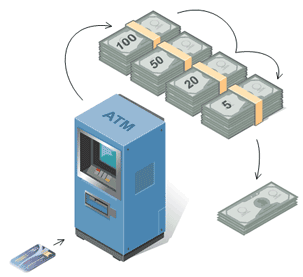

理解

实现
public interface Handler {
public void operator();
} public abstract class AbstractHandler {
private Handler handler;
public Handler getHandler() {
return handler;
}
public void setHandler(Handler handler) {
this.handler = handler;
}
} public class MyHandler extends AbstractHandler implements Handler {
private String name;
public MyHandler(String name) {
this.name = name;
}
@Override
public void operator() {
System.out.println(name+"deal!");
if(getHandler()!=null){
getHandler().operator();
}
}
} public class Test {
public static void main(String[] args) {
MyHandler h1 = new MyHandler("h1");
MyHandler h2 = new MyHandler("h2");
MyHandler h3 = new MyHandler("h3");
h1.setHandler(h2);
h2.setHandler(h3);
h1.operator();
}
} h1deal!
h2deal!
h3deal!此处强调一点就是,链接上的请求可以是一条链,可以是一个树,还可以是一个环,模式本身不约束这个,需要我们自己去实现,同时,在一个时刻,命令只允许由一个对象传给另一个对象,而不允许传给多个对象。
其他实现
Intent
- Avoid coupling the sender of a request to its receiver by giving more than one object a chance to handle the request. Chain the receiving objects and pass the request along the chain until an object handles it.
- Launch-and-leave requests with a single processing pipeline that contains many possible handlers.
- An object-oriented linked list with recursive traversal.
Problem
There is a potentially variable number of "handler" or "processing element" or "node" objects, and a stream of requests that must be handled. Need to efficiently process the requests without hard-wiring handler relationships and precedence, or request-to-handler mappings.
Discussion
Encapsulate the processing elements inside a "pipeline" abstraction; and have clients "launch and leave" their requests at the entrance to the pipeline.
The pattern chains the receiving objects together, and then passes any request messages from object to object until it reaches an object capable of handling the message. The number and type of handler objects isn't known a priori, they can be configured dynamically. The chaining mechanism uses recursive composition to allow an unlimited number of handlers to be linked.
Chain of Responsibility simplifies object interconnections. Instead of senders and receivers maintaining references to all candidate receivers, each sender keeps a single reference to the head of the chain, and each receiver keeps a single reference to its immediate successor in the chain.
Make sure there exists a "safety net" to "catch" any requests which go unhandled.
Do not use Chain of Responsibility when each request is only handled by one handler, or, when the client object knows which service object should handle the request.
Structure
The derived classes know how to satisfy Client requests. If the "current" object is not available or sufficient, then it delegates to the base class, which delegates to the "next" object, and the circle of life continues.
Example
The Chain of Responsibility pattern avoids coupling the sender of a request to the receiver by giving more than one object a chance to handle the request. ATM use the Chain of Responsibility in money giving mechanism.

Check list
- The base class maintains a "next" pointer.
- Each derived class implements its contribution for handling the request.
- If the request needs to be "passed on", then the derived class "calls back" to the base class, which delegates to the "next" pointer.
- The client (or some third party) creates and links the chain (which may include a link from the last node to the root node).
- The client "launches and leaves" each request with the root of the chain.
- Recursive delegation produces the illusion of magic.
Rules of thumb
- Chain of Responsibility, Command, Mediator, and Observer, address how you can decouple senders and receivers, but with different trade-offs. Chain of Responsibility passes a sender request along a chain of potential receivers.
- Chain of Responsibility can use Command to represent requests as objects.
- Chain of Responsibility is often applied in conjunction with Composite. There, a component's parent can act as its successor.
public class ChainBefore {
interface Image {
String process();
}
static class IR implements Image {
public String process() {
return "IR";
}
}
static class LS implements Image {
public String process() {
return "LS";
}
}
static class Processor {
private static java.util.Random rn = new java.util.Random();
private static int nextId = 1;
private int id = nextId++;
public boolean handle( Image img ) {
if (rn.nextInt(2) != 0) {
System.out.println( " Processor " + id + " is busy" );
return false;
}
System.out.println( "Processor " + id + " - " + img.process() );
return true;
}
}
public static void main( String[] args ) {
Image[] input = { new IR(), new IR(), new LS(), new IR(), new LS(), new LS() };
Processor[] procs = { new Processor(), new Processor(), new Processor() };
for (int i=0, j; i < input.length; i++) {
j = 0;
while ( ! procs[j].handle( input[i] ))
j = (j+1) % procs.length;
}
}
}输出:
Processor 1 - IR
Processor 1 is busy
Processor 2 is busy
Processor 3 is busy
Processor 1 is busy
Processor 2 is busy
Processor 3 - IR
Processor 1 is busy
Processor 2 - LS
Processor 1 - IR
Processor 1 - LS
Processor 1 is busy
Processor 2 is busy
Processor 3 is busy
Processor 1 - LS





















 4973
4973











 被折叠的 条评论
为什么被折叠?
被折叠的 条评论
为什么被折叠?








